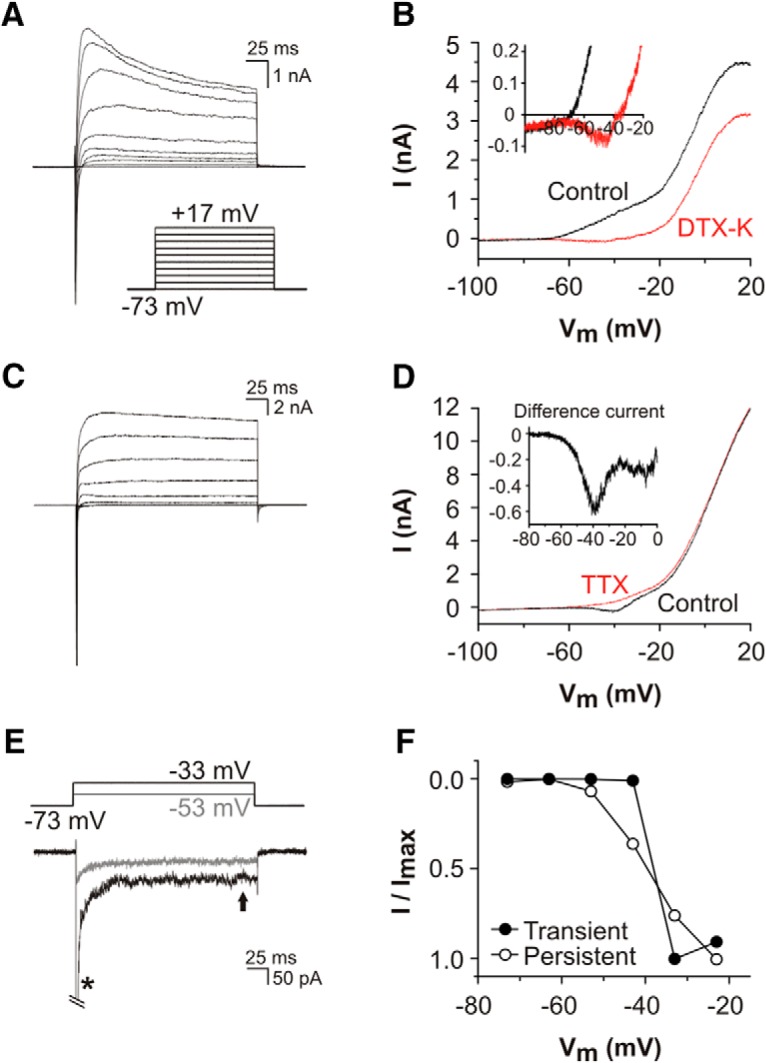Figure 1.

TTX-sensitive transient and persistent Na+ currents identified in SGNs cultured from hearing mice. A, Current responses recorded using K+-filled patch electrodes, from a representative rapidly-adapting P14 SGN during 200-ms voltage steps. A transient inward Na+ current (INaT) was followed by LVA and HVA outward K+ currents. B, Current response from the same cell during a voltage ramp (between −143 and +47 mV, duration 400 ms) before (control) and after bath application of 100 nM DTX-K. DTX-K blocked the LVA K+ current, revealing a small inward current activated at potentials positive to −65 mV (detailed in the inset). C, Current responses recorded using K+-filled patch electrodes, from a representative nonadapting P14 SGN during 200-ms voltage steps (protocol described in A). Activation of INaT was followed by activation of HVA K+ currents. LVA K+ currents were absent from this cell. D, Current responses from the same SGN, during a voltage ramp before (control) and after bath application of 100 nM TTX. A TTX-sensitive inward current activated at potentials positive to −65 mV (difference current, detailed in the inset). E, TTX-subtracted currents recorded from the SGN in D, during 200-ms depolarizing voltage steps. A voltage step to −53 mV activated a small persistent inward current (INaP), whereas the voltage step to −33 mV activated a large INaT (*, peak current cropped for clarity) and a small INaP. F, Comparison of the voltage dependence of TTX-sensitive INaT and INaP (measured at the arrow in E) in this SGN.
